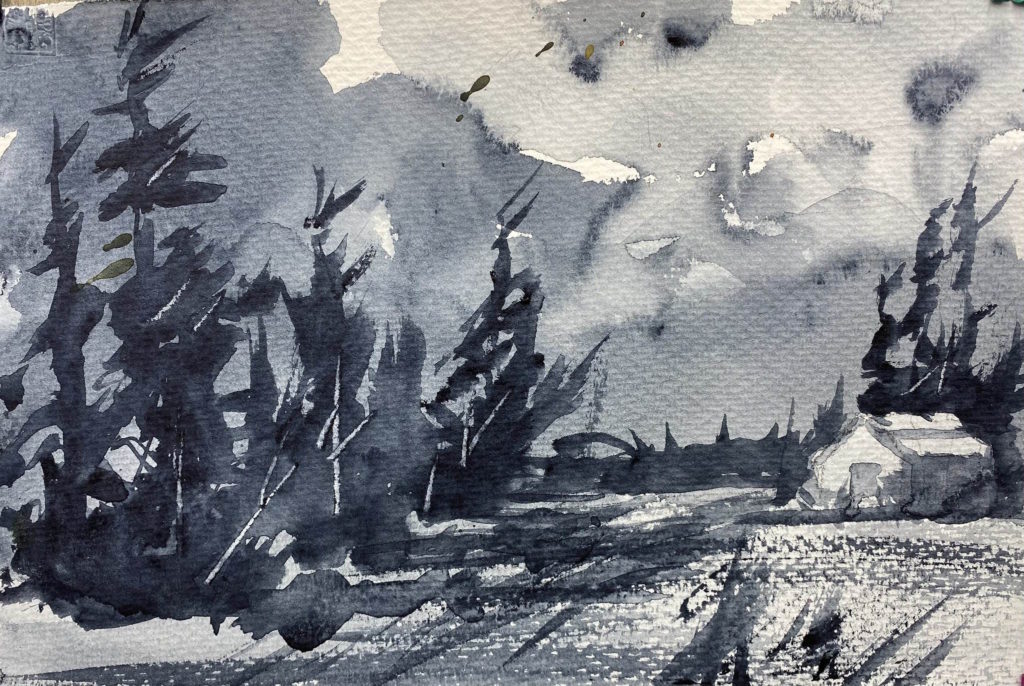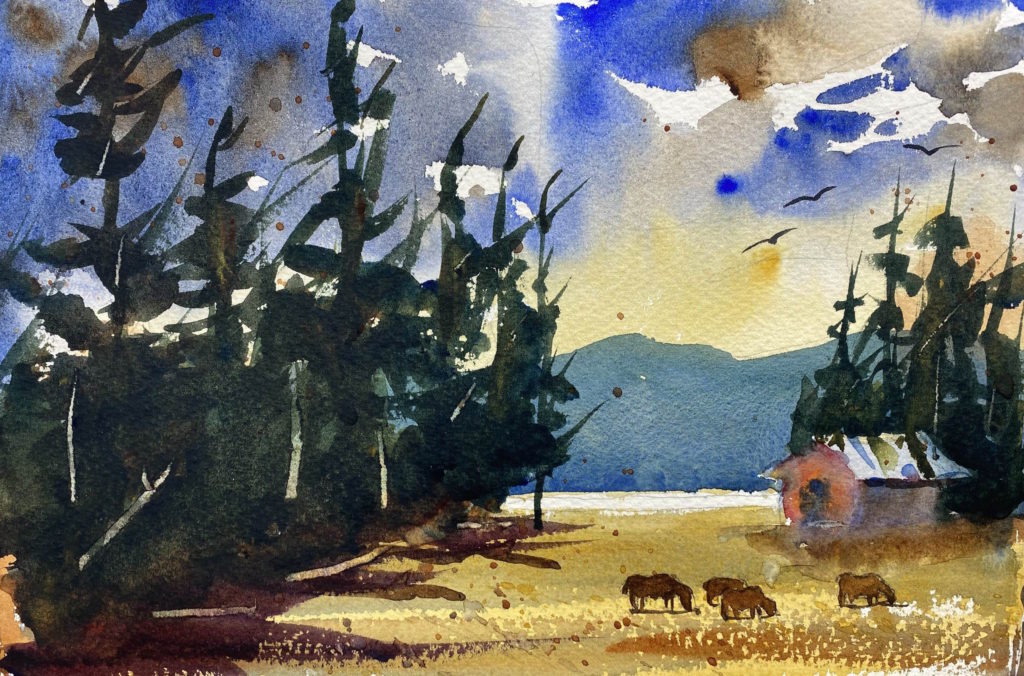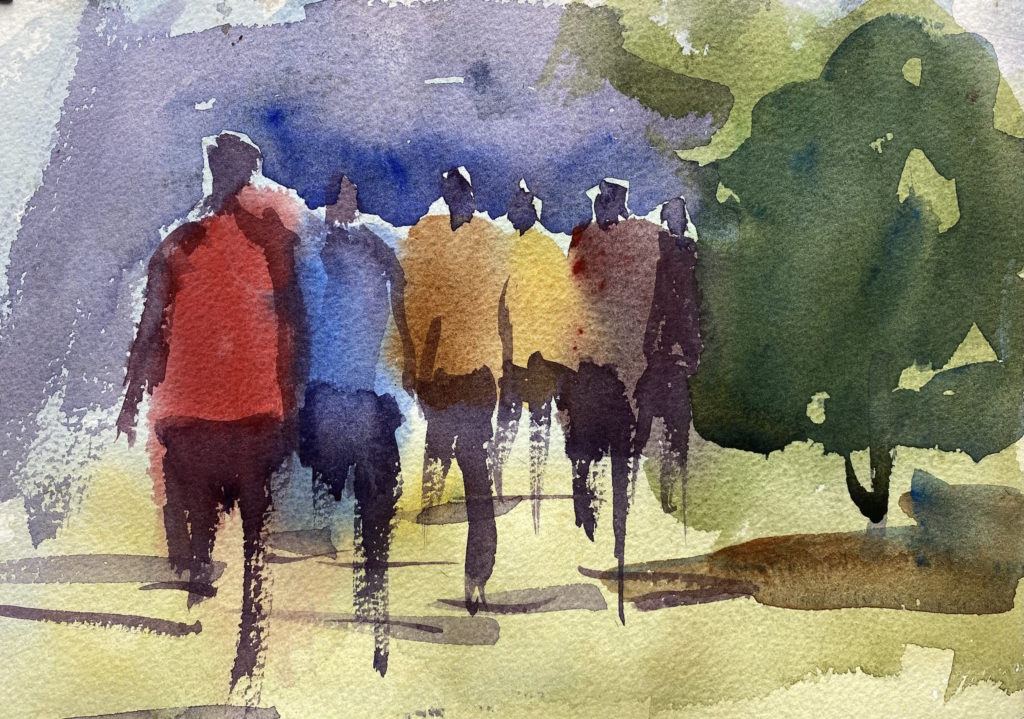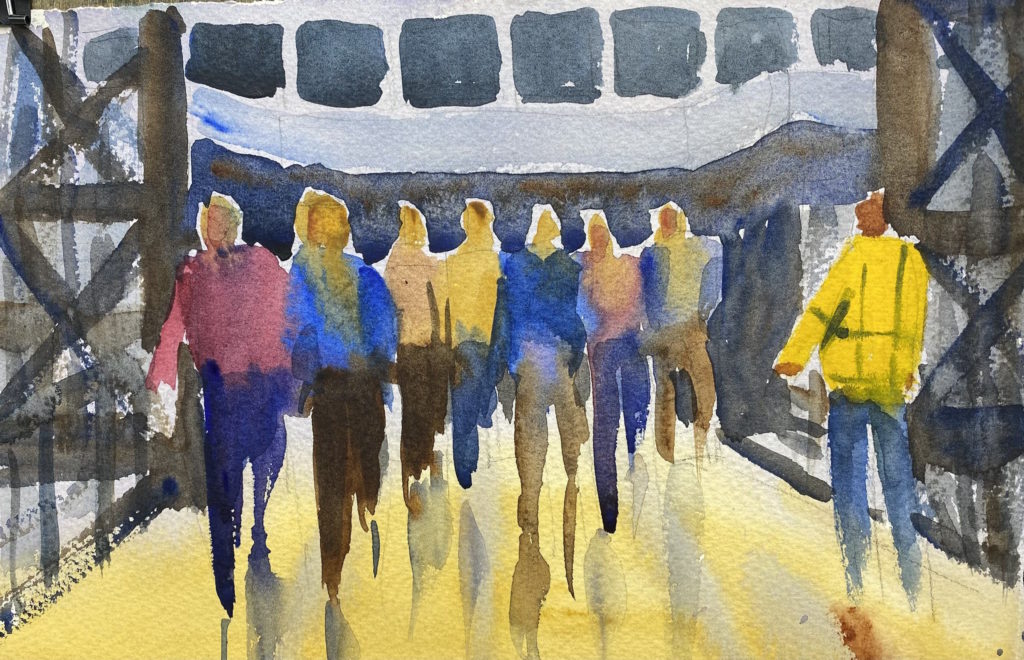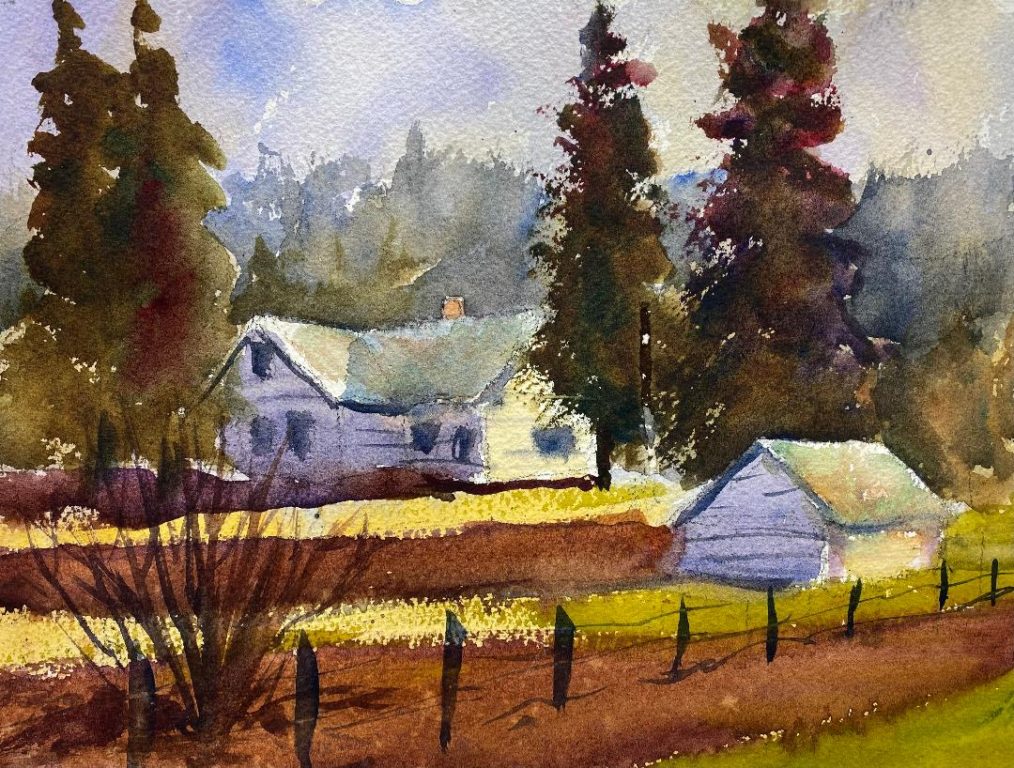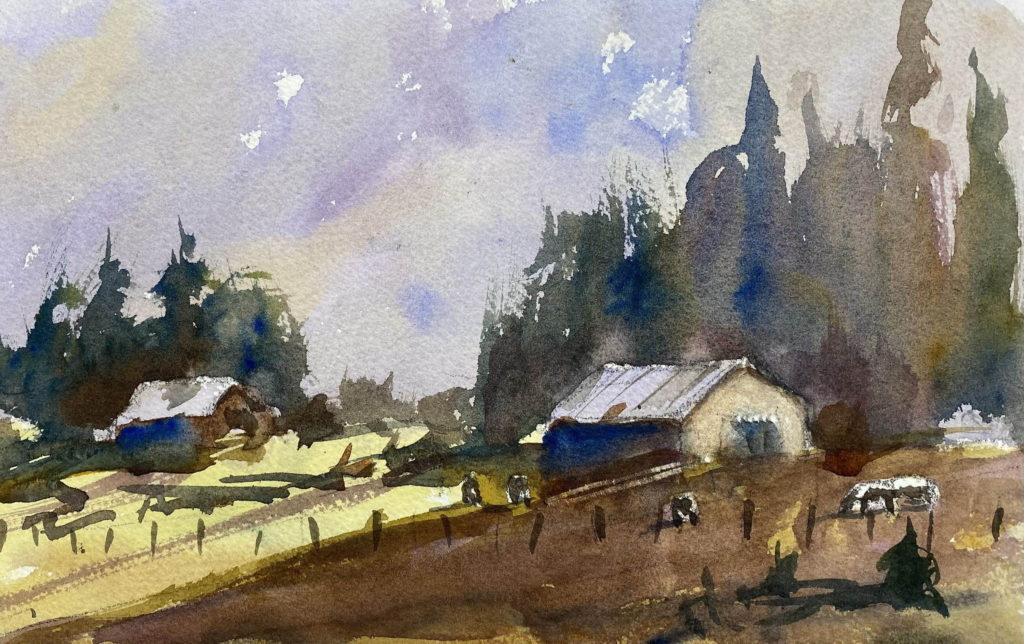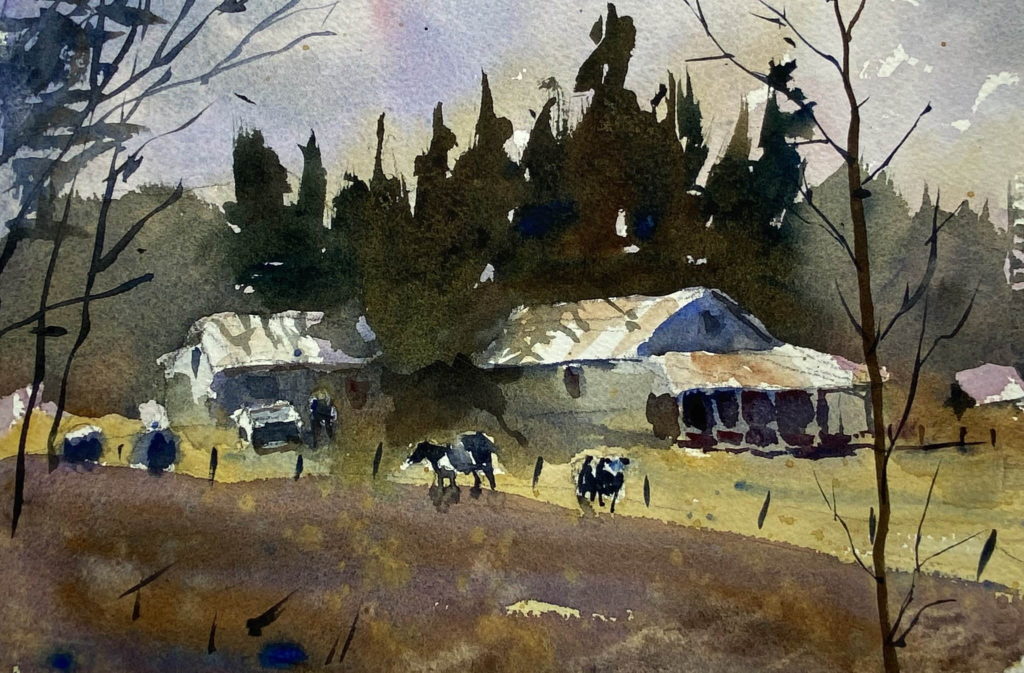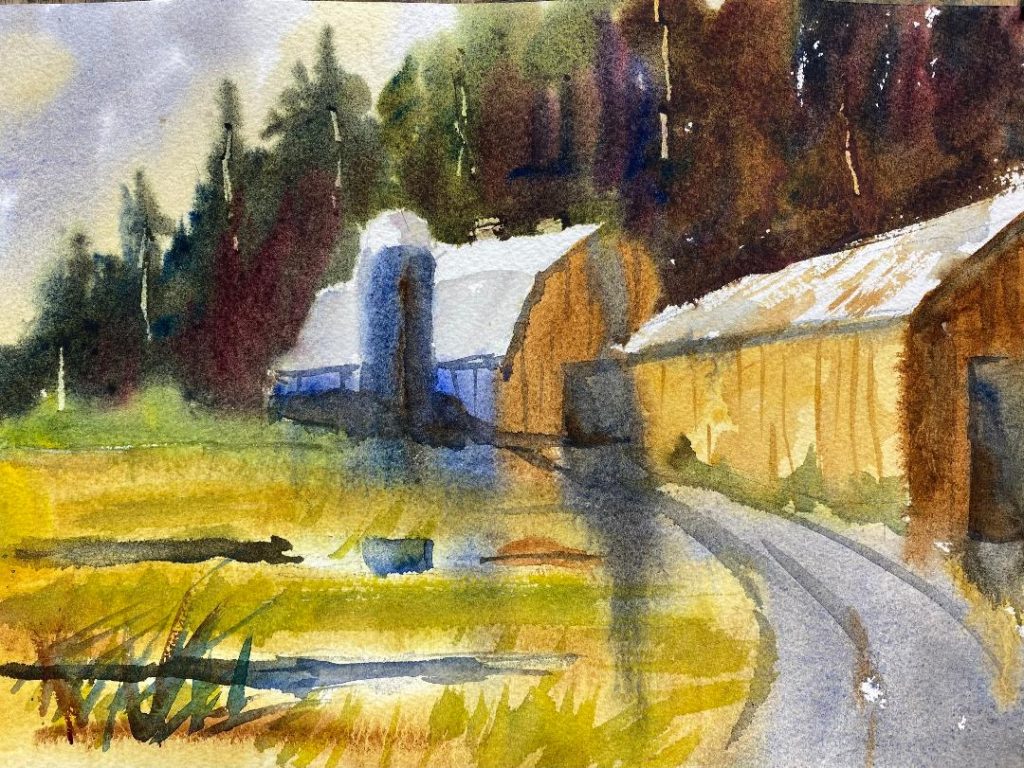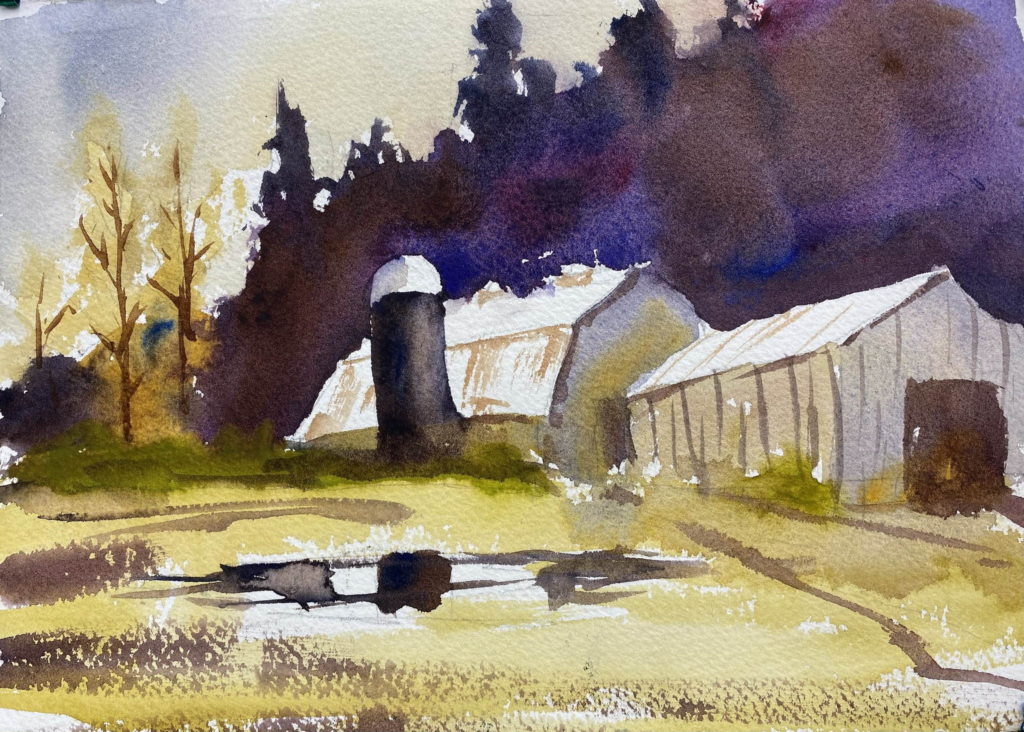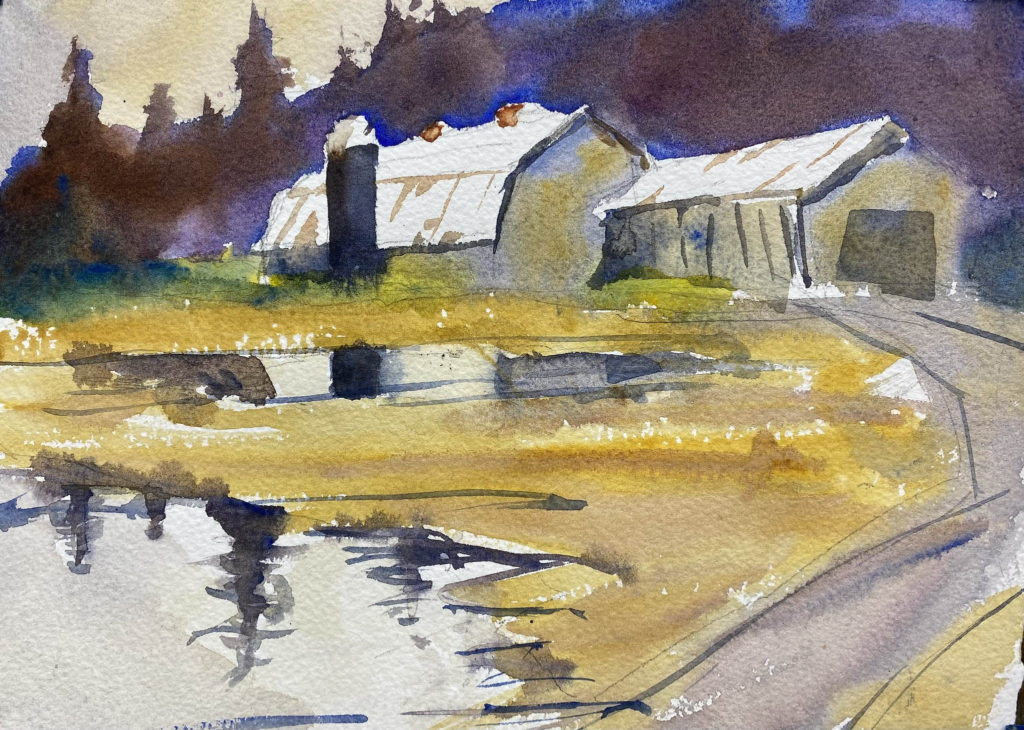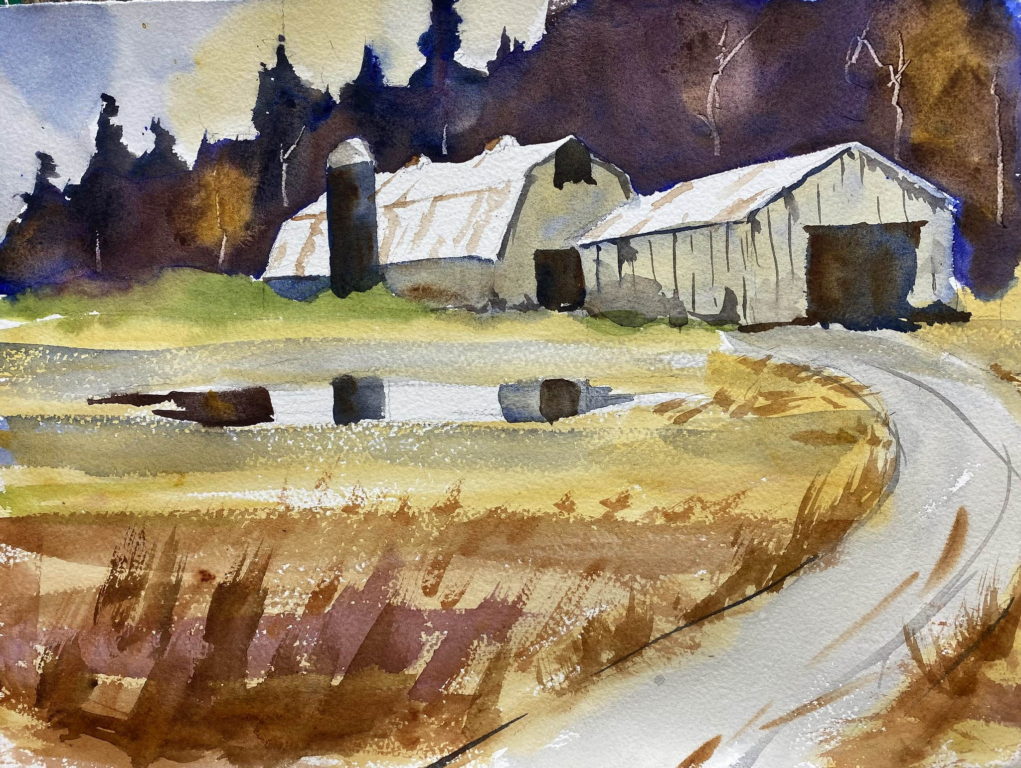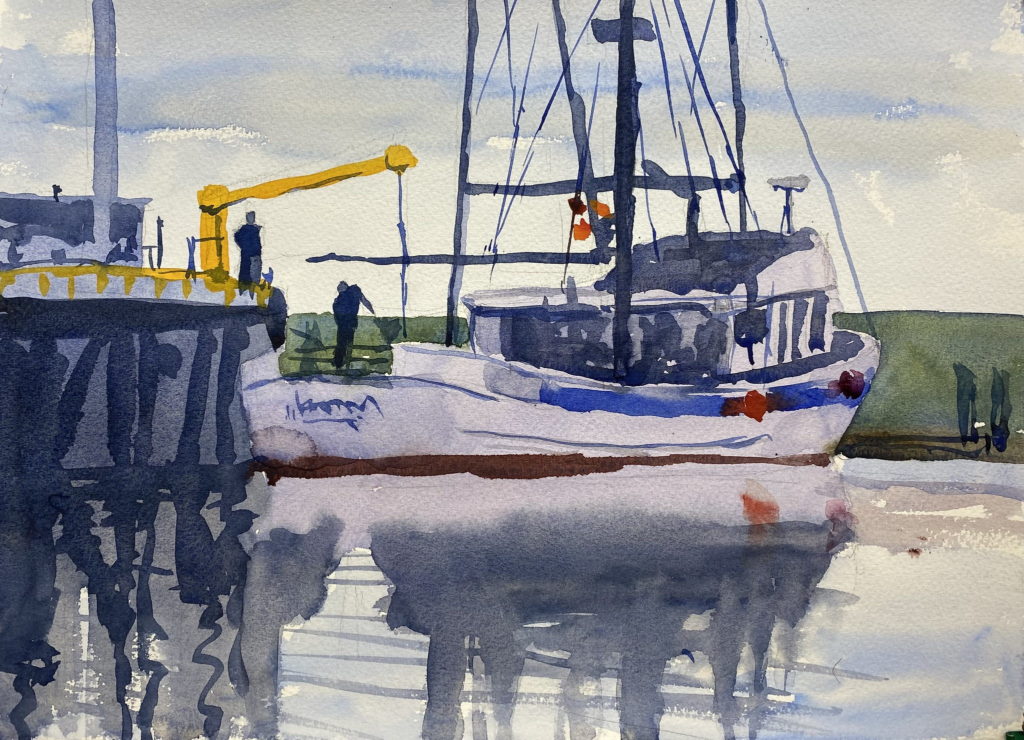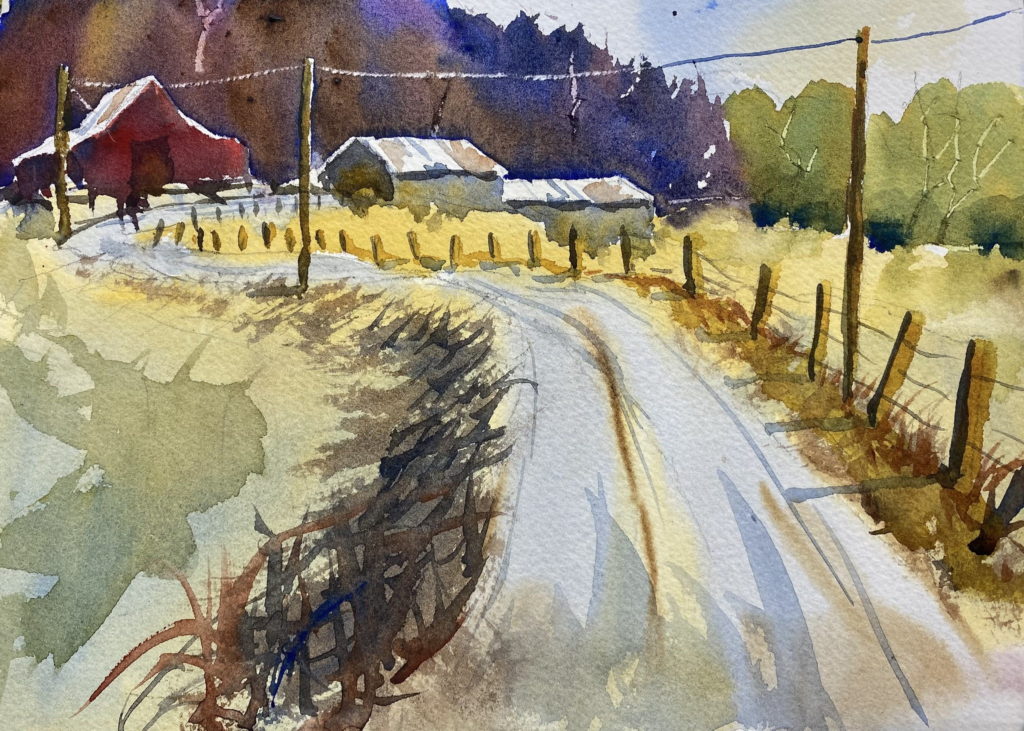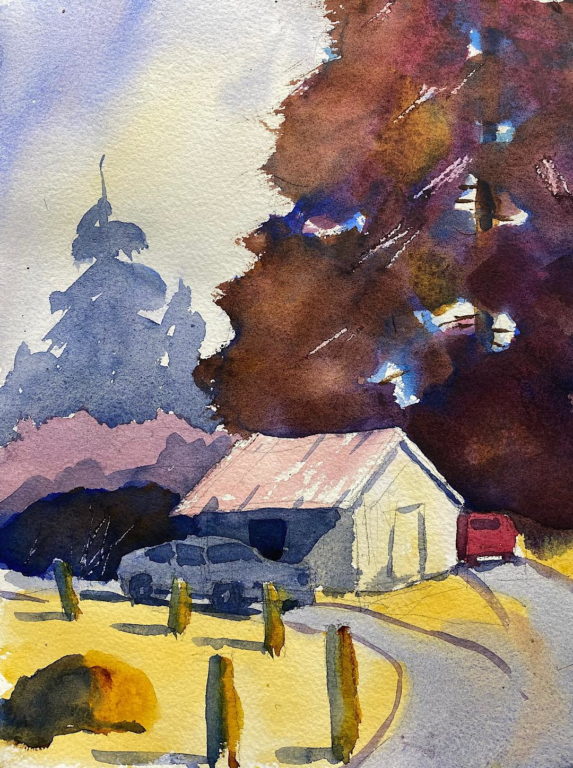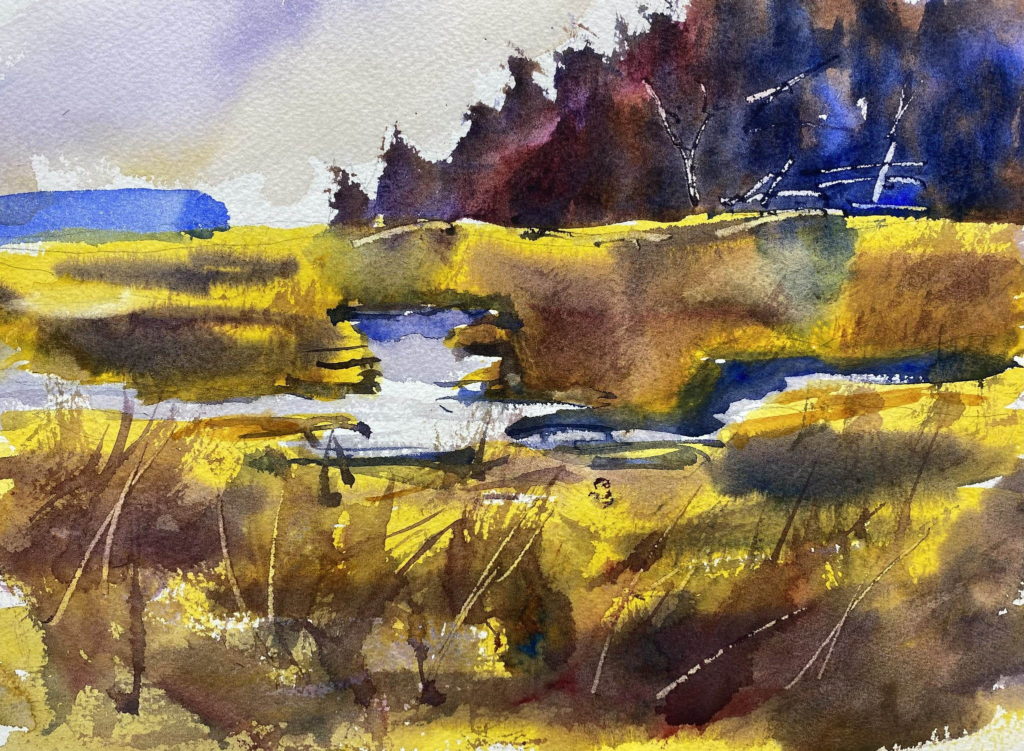Rainy day on Tracyton Boulevard
On a rainy day last week, I took a drive down Tracyton Boulevard. It’s a winding road along the shores of Dye’s Inlet, and it has some great views. I took a photo of a car on a curve of the road, and made a painting of it when I got back in my studio.
The assignment for my watercolor class is to paint a one-color version of a scene, then paint a three-color version of the same scene. So I made a one-color painting with Payne’s Gray, then I made a three-color painting using Ultramarine Blue, Burnt Umber, and Quinacridone Gold. My goal was to paint the background trees wet-in-wet to capture the feeling of a foggy, rainy day.
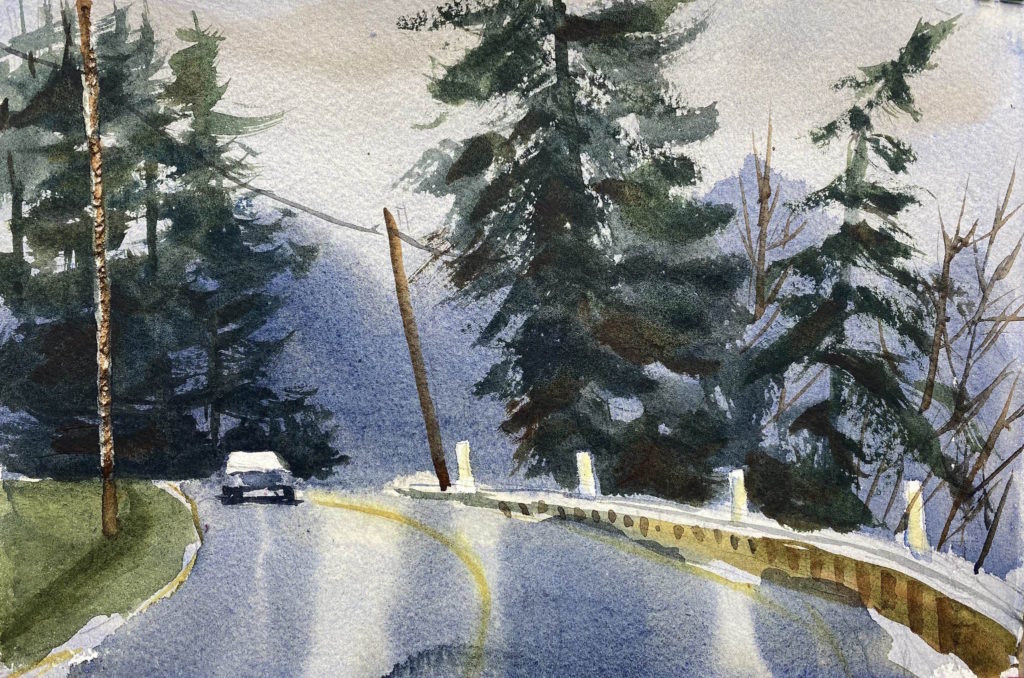
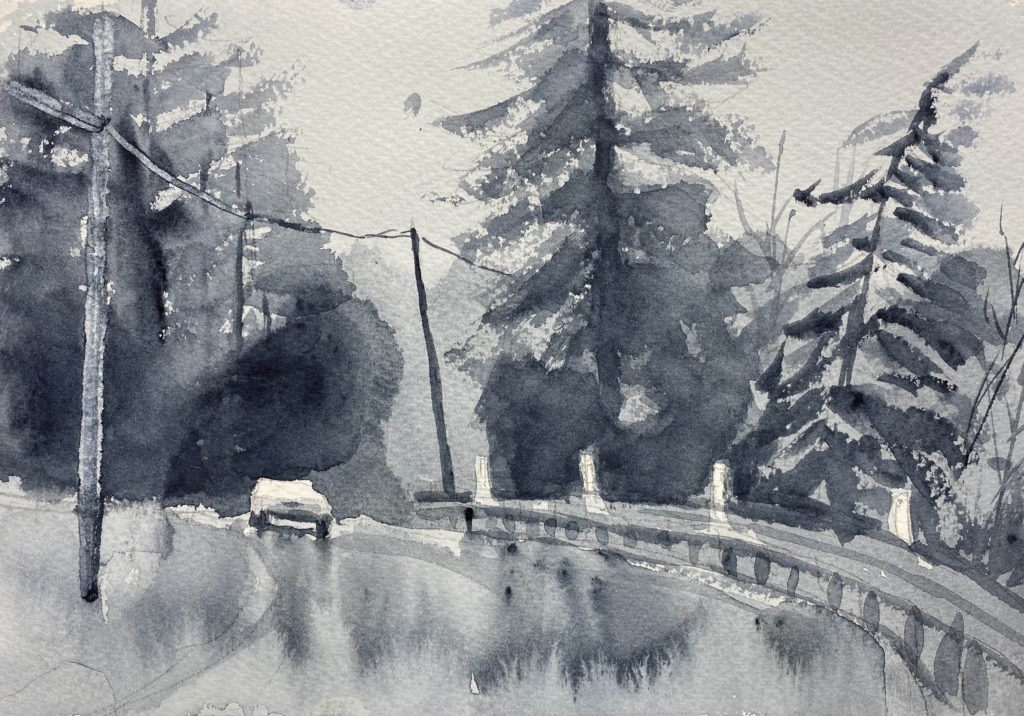
Rainy day on Tracyton Boulevard Read More »

